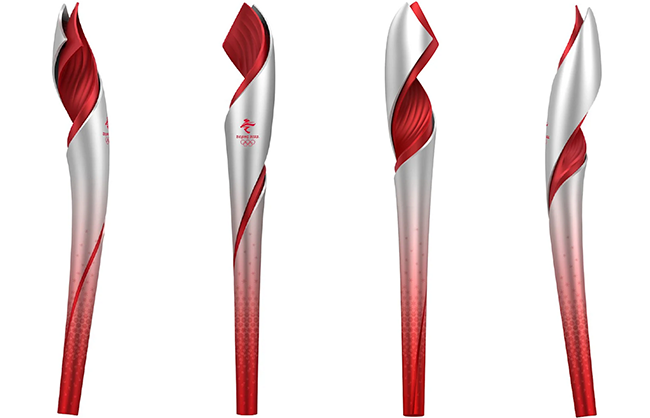The Winter Olympics: Going for the Gold by Way of Plastics
Plastics and polymers are taking a starring role in the 2022 Winter Olympics in Beijing — starting with the torch and extending into equipment, clothing, and even advertising.
February 2, 2022
The opening ceremony of the 2022 Winter Olympics in Beijing, as well as the traditional torch relay, will feature futuristic red-and-silver torches made of a carbon-fiber composite. The material is said to be lighter than traditional steel but seven to nine times harder. Black strands of the material were woven into the multi-curve base shape, then infused with a special resin to harden into a shell that is polished and painted. The material was also used to create a fuel tank that will burn hydrogen fuel. Finally, 1,268 decorative patterns were laser etched on the body of each torch.
|
The torch for the 2022 Winter Olympics is made from a carbon-fiber composite. |
From Great Britain come two unique uses of plastics exclusively for the Olympics.
First, adidas and the environmental group Parley for the Oceans have collaborated on a jacket for Team GB, incorporating recycled ocean plastic into the Terrex Myshelter Primaloft Parley jacket. The jacket uses Primeblue, “a high-performance yarn made with 50% Parley ocean plastic — upcycled plastic waste intercepted on shorelines and coastal areas,” explained adidas.
Meanwhile, the BBC unveiled its 40-second “Extreme by Nature” mixed-media Olympics ad, created by incorporating winter scenes 3D printed with polymer material. The trailer combines 3D-printed “cubes” and creative camera work to depict the intense motions of some of the 15 sports to be played at the games. Check out the video at the top of this article — it’s quite stunning.
On the homefront, Stratasys printed numerous iterations of luge molds to keep improving the athletes’ sleds. As the team tested those iterations, they tweaked various elements and sent those ideas back to Stratasys. Molds for new designs can be printed and turned around in two weeks — a far cry from the two or three months it used to take.
The 2022 Winter Olympics run from Feb. 4 through 20.
About the Author(s)
You May Also Like



